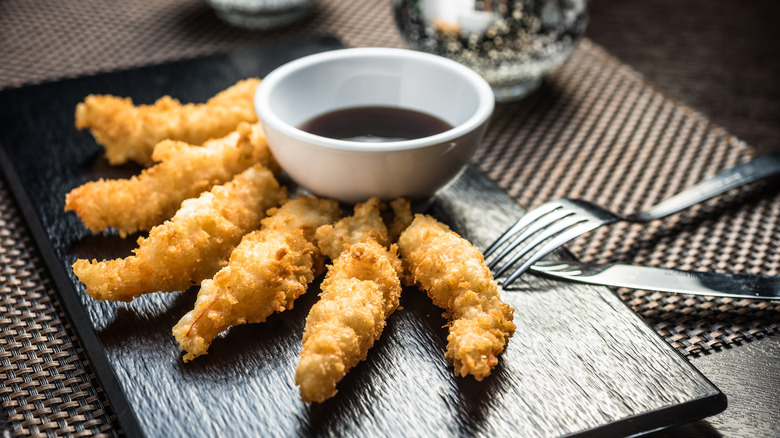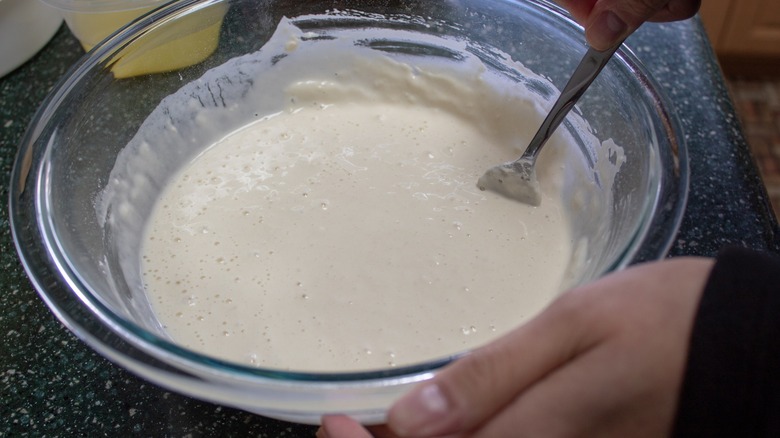The Secret To Perfect Chicken Tempura Is To Ease Up On The Batter
Tempura, a Japanese cuisine staple, has found its way into hearts and kitchens around the world. It's not just about vegetables or shrimp; chicken tempura, with its crispy golden exterior and juicy meat inside, holds its own unique charm. But making it at home can be tricky, especially when it comes to the batter. The batter is one of the defining features of tempura, yet, it's where many go wrong. This egg-flour-water mixture should be thin and light, not thick and heavy.
For those unfamiliar with the dish, tempura involves taking various ingredients, often seafood or vegetables, and frying them in a light batter. Chicken tempura is an extension of this tradition, swapping out shrimp or veggies for tender pieces of chicken. When done right, the result is a perfectly crispy treat that's succulent inside.
So why is a light batter required? Chicken has its own great taste. The point of tempura batter is to highlight that taste, not hide it. If the batter is too thick, all you taste is the doughy fry, not the chicken. Plus, with too much batter, the chicken might not cook evenly. The outside could look done, but the inside might still be raw. And nobody wants to eat undercooked chicken.
A light batter for the perfect chicken tempura
In order to nail the right technique for preparing chicken tempura batter, we first need to understand the science behind it. One word you'll often hear when talking about recipes involving wheat flour (that includes batter) is gluten. For an authentic tempura, we need to keep gluten formation at a minimum. High gluten levels will lead to a chewy coating that's thick and heavy, quite the opposite of the crispy, light tempura we all crave.
Because of this, the batter's preparation process is so crucial. Overzealous mixing is a direct invitation to gluten formation. The solution is to ease up and mix gently and lightly. To do so effectively, ditch that whisk and use chopsticks instead. It might seem strange, but having a few lumps in the batter is okay. Those lumps can turn into crispy bits when frying.
Beyond gluten management, some other techniques can also help achieve that airy, light batter. Sifting the flour and mixing it gently introduces air, setting the stage for a lighter batter. And when you're getting the chicken ready to fry, first cover the pieces with a very light flour layer, then just a quick dip in the batter is all you need. The goal is to lightly coat the chicken, not wrap it up in a thick layer of batter.

